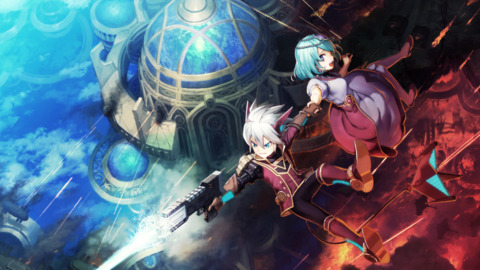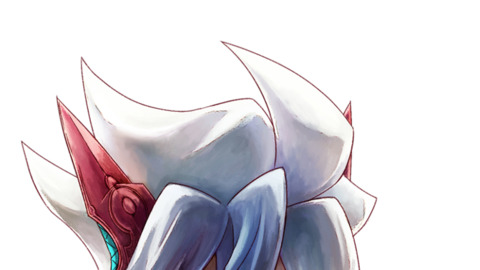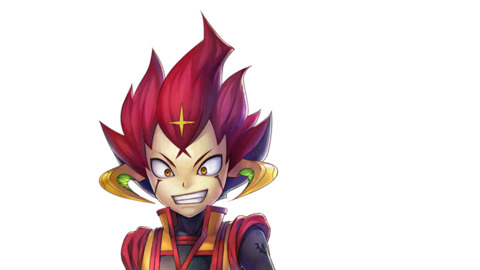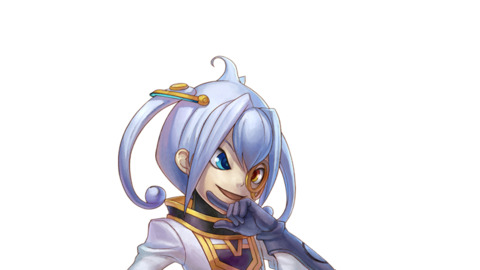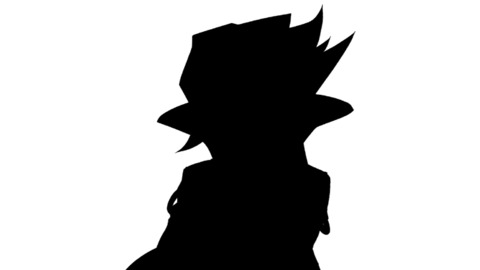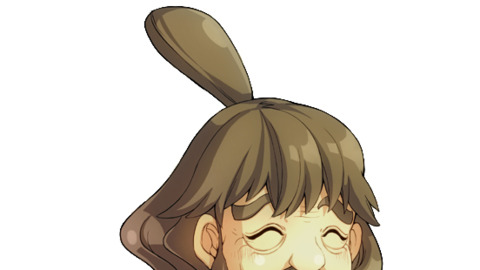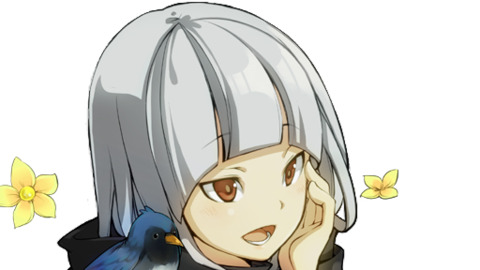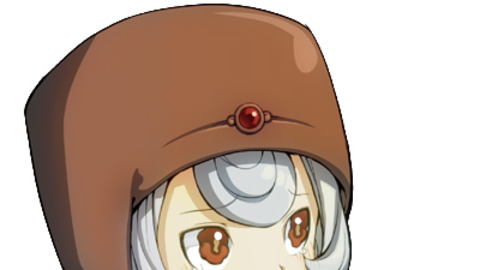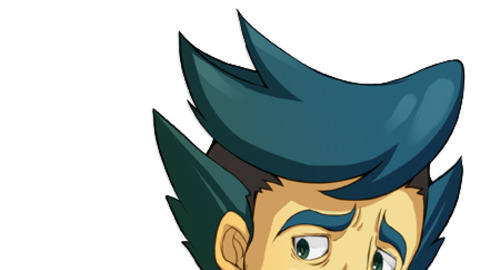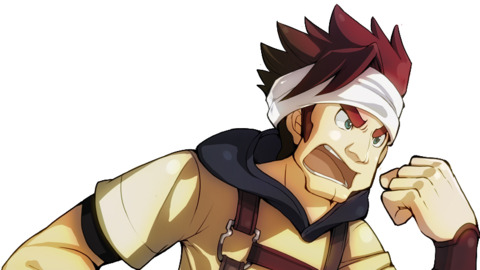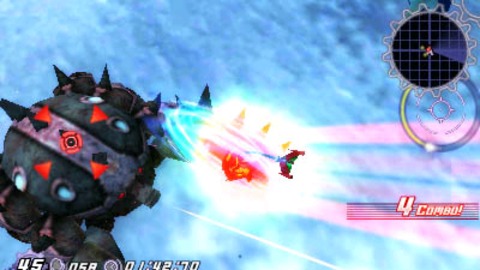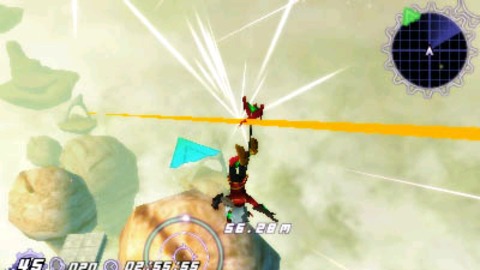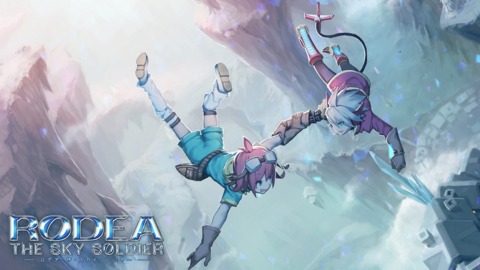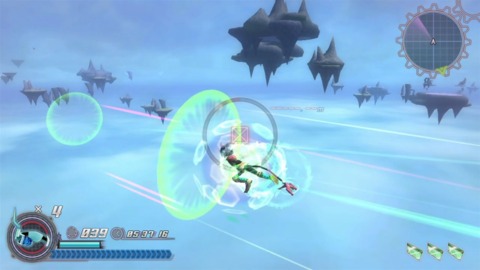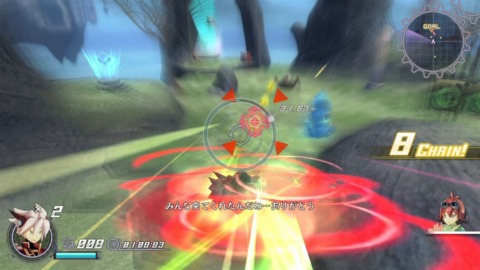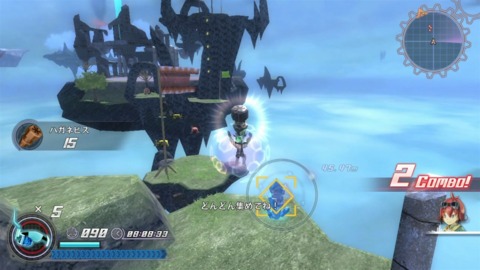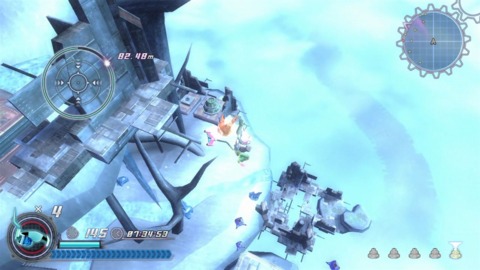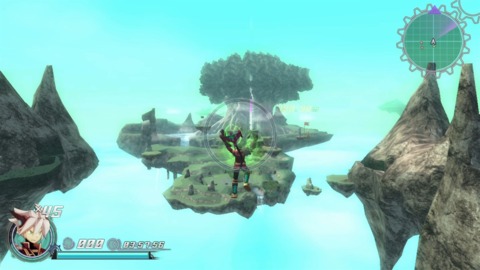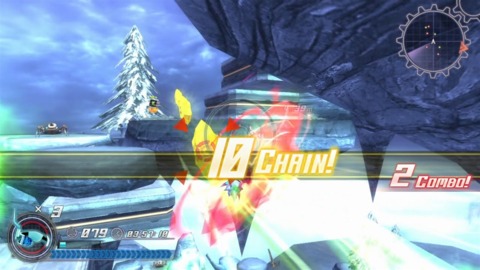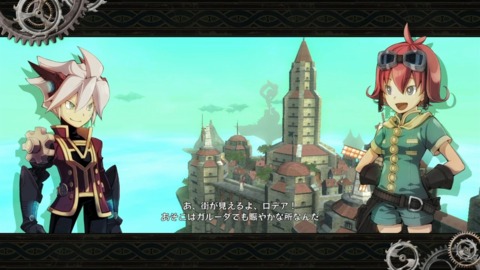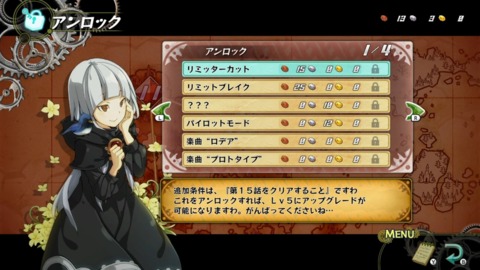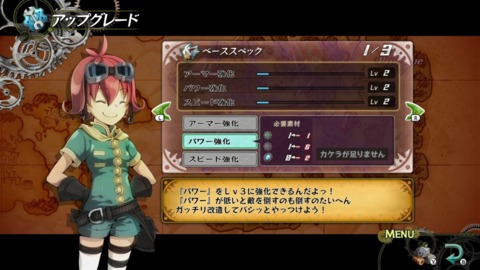Overview
Rodea the Sky Soldier is a 3D platformer written by Takumi Miyajima and directed by Yuji Naka, the original programmer for, and often considered the "father" of, Sega's Sonic the Hedgehog series. Combining elements from Naka's previous work on the Sonic series and NiGHTS Into Dreams..., the game focuses on Rodea, a robot guardian of the floating kingdom of Garuda with the power of flight.
Naka's studio, Prope, originally designed Rodea the Sky Soldier for Nintendo's Wii console, making full use of the system's Remote controller. Though the game was finished in 2011, the game's publisher, Kadokawa Games, chose not to release it. Ultimately, Kadokawa Games revived the project, developing adaptations of the unreleased game for 3DS and Wii U without Prope's involvement. Kadokawa Games would release their new version of Rodea the Sky Soldier on April 2, 2015. As a bonus, Kadokawa Games included a second disc with all first printings of the Wii U edition including Prope's original Wii version; the 3DS edition shipped with a bonus soundtrack CD. NIS, who localized the game, would follow suit, releasing the Wii U and 3DS editions of Rodea the Sky Soldier with the same first printing bonuses in North America and Europe later that year.
Story
Once every millennium, the floating kingdom of Garuda aligns with the Chronos Towers, four mighty conduits built by the surface-dwelling Naga Empire. Emperor Geardo, leader of the highly mechanized Naga Empire, seizes the rare moment by launching an invasion of Garuda, hoping to harvest their Graviton energy. Before he can send his forces to "climb the tower," Princess Cecilia, opposing her father's plans, flees to Garuda in an airship with her robot bodyguard, Rodea, and the Key of Time, an artifact necessary for the full invasion to commence. When her airship is shot down en route to Garuda and surrounded by Geardo's forces, Princess Cecilia splits the Key of Time in two, entrusting the protesting Rodea with one half while teleporting him to a faraway desert in Garuda. Guilt-ridden by his inability to protect Cecilia, Rodea shatters his right arm and goes inactive.
Ion, a young woman with a penchant for building machines, discovers the non-functioning Rodea and reactivates him, rebuilding his arm in the process. Remembering nothing but his name and a vague order to protect Garuda, Rodea follows Ion home. After a tense meeting with Ion's grandfather—who, like many of Garuda's residents, fears machines and suspects them of being Naga agents—Rodea and Ion learn that it is, once again, the day that Garuda aligns with the Chronos Towers. Thanks to Princess Cecilia's sacrifice one thousand years ago, the invasion failed and the Naga were believed to have gone extinct; Cecilia has since come to celebrated as a hero of Garuda. Suddenly the towers activate, beaming a message from the assumed dead Emperor Geardo declaring war once again on Garuda. Portals around the towers open up, sending streams of mechanical soldiers to invade the floating kingdom.
After a pause to obtain herbs for Ion's neighbor Tonio's sick sister—a quest that leads Rodea to remember that he has "a heart" and therefore the capacity for humanity—Rodea and Ion embark on a mission to destroy the four Chronos Towers and their guardians, and stop the invasion once and for all. As the team travels to the Chronos Towers and have several run-ins with Rodea's "siblings"—Orthos, Rylus and Kelvis—Rodea slowly regains his memories and remembers his true nature: that he was first a line of advanced humanoid soldiers and personally selected by an eight-year-old Cecilia to be her bodyguard; and that his siblings, jealous of his relationship with Cecilia and his being the first to get a name, labeled him a traitor for promising Cecilia that he would protect Garuda. Though Rodea is reluctantly forced to fight each sibling to the finish, he is able to help each sibling "find their heart" and discover their inner humanity before all three make the ultimate sacrifice.
Ultimately, Rodea and Ion are able to destroy the four Chronos Towers. But their victory is short-lived, for the duo is caught by surprise by Valghis, Rodea's most powerful sibling. Valghis, having come into possession of Cecilia's half of the Key of Time, steals Rodea's half and fixes the Key. He then unleashes its full potential, jamming the key into Rodea and "unlocking" a rift in time to the Naga Empire 1,000 years in the past. The new invasion would not be led by the current Naga Empire, greatly weakened from the failed invasion, but by Emperor Geardo and his mighty army of a millennium prior. Undeterred, Rodea enters the void to bring the fight to the Naga Empire head-on.
On the other side of the rift, Rodea is transported to the moment after Cecilia teleported him away, but is once again unable to save her as Cecilia throws herself off the island to protect her half of the Key of Time. Emperor Geardo appears and, seemingly unmoved by his daughter's death, insults Rodea for his "failure" to follow orders, challenging him to a final showdown if he can survive. With Ion in tow, Rodea makes a final assault on Geardo's fortress.
After surviving traps leading to alternate dimensions, Rodea finds his way to the throne room, with the almost fully machine Emperor Geardo waiting for him. A tense fight renders Rodea the winner, but Valghas emerges from the shadows to assert his supremacy. After offering Rodea the chance to join him and rule Garuda under a new machine empire (an offer Rodea refuses), Valghas attacks Rodea and the two square off in a final battle.
As Valghas falls, he reveals to Rodea that he had initially considered leaving Garuda alone, but observing Rodea made him long for the freedom of Garuda's skies. Perverted by his orders to bring Emperor Geardo 1,000 years into the future, he decided that he would either become Garuda's ruler or die by Rodea's hand. As he deactivates, he asks Rodea what he will do now that he has completed his mission; but as Rodea responds, Valghas interrupts him with a somber reminder: "We're robots... Not humans."
But before Rodea can process this message, a towering, tentacled mechanical creature appears before him and Ion: the real Emperor Geardo. Driven mad by his ruined kingdom and the loss of his daughter, Geardo transformed himself into a gargantuan metal monster convinced that Ion is Cecilia. After a climactic battle, Rodea dismantles the Emperor and destroys the Naga Empire once and for all. As Ion and Rodea celebrate their victory, Rodea reveals that he lied to Ion and will not be able to return to Garuda with her. Though Ion pleads with him, Rodea plunges the Key of Time into his body and opens the rift, sending Ion back to the future. Alone, Rodea collapses to the ground and watches the starry sky, noting he cannot see Garuda anymore. Meanwhile, Ion awakens in the middle of her village, as her neighbors and grandfather are on their way to the graves of Princess Cecilia and Rodea to pay their respects on the day that Garuda aligns with the Chaos Towers.
In a post-credits scene, it is revealed that Ion once again discovers a non-functional Rodea in the desert. This time, however, Rodea remembers everything, and ensured he would be there to keep his promise to Ion. As they embrace, the neighbors and Rodea's siblings surround them and celebrate.
Gameplay
Because of their shared DNA, the two versions of Rodea the Sky Soldier are nearly identical when broken into abstracts. Prope's original Wii version and Kadokawa Games' 3DS and Wii U adaptations are 3D platformers in which the player controls Rodea as he runs and flies through linear levels; both versions allow Rodea free flight over environments to collect Gravitons, the game's primary currency; slow Rodea's speed whole falling to give the player ample time to recover and plot a new trajectory; and punish death by returning Rodea to a mid-level checkpoint with no Gravitons. Both versions share the same story progression, music and cutscenes, and even level designs. Both versions feature hidden medals in most of the game's chapters that unlock special bonuses if all are collected. In both versions, players can find Sonic-like item boxes containing extra lives, Gravitons, or shields that can absorb one hit, and both versions assign letter grades to score players on the time taken to complete a chapter and the number of Gravitons collected. Nevertheless, Kadokawa Games' 3DS and Wii U adaptations make drastic changes to the gameplay of Prope's original design, altering the mechanics to adapt to consoles without IR controllers and replacing gameplay systems wholesale. As such, despite their near-identical content, the two versions of Rodea the Sky Soldier play very differently from one another.
Wii Edition:
In Prope's original version, players control Rodea using only the Wii Remote. The d-pad is used to move Rodea around the game's 3D environments, while pointing at the screen engages a pointer used for aiming and camera controls. Using the pointer, the player can lock on to any collectable, enemy or environmental object within range by holding the B trigger; releasing B will cause Rodea to fly straight towards the object, while shaking the Remote up, down, left or right will arc Rodea's trajectory in the chosen direction. Holding A during flight will cause Rodea to boost, greatly increasing his speed and causing damage to targeted enemies.
Rodea has near infinite flight, provided that he is given a target. Once airborne, Rodea will fly until making contact with the target; in the case of moving targets, Rodea has about five seconds of flight time to connect with the target before he begins to free fall. At any point during flight, the player can select a new target by locking-on with the pointer, which will immediately set Rodea's path to the new target with whatever trajectory the player provides. If flown into a vertical surface, Rodea can cling to the wall by holding the B trigger; releasing the trigger will cause Rodea to attempt to leap above the surface, which players can use to vault walls.
Health in the Wii version operates on a three-tiered system. Rodea begins every level at a normal state. If the player collects an item shaped like the flail at the end Rodea's tail, Rodea enters a powered-up state symbolized by his hair turning green and his flail increasing in size. During this state, Rodea's attack power is doubled and is more mobile in flight, allowing for wider arcs in his flight path. Taking damage will return Rodea to normal state. If Rodea takes damage while in his normal state, his flail shrinks as he enters a damaged state. While damaged, Rodea's power is drastically reduced; he can no longer boost, and his flight devolves into an air dash, giving him a second of flight time before losing momentum. (Like with flight, the player can infinitely chain dashes together to still navigate levels, albeit slowly.) The player loses a life if Rodea takes another hit while in this state. Collecting a flail will return Rodea to normal state.
The game features a light combo system, rewarding players for the number of enemies they can defeat in a "chain" without taking damage or touching a surface. Players are awarded three Gravitons for each defeated enemy, with each subsequent enemy in the chain increasing the reward (i.e., four for the second enemy; five for the third enemy; and so on).
Throughout Chapters, the player can find special power-ups, called Gears, that give Rodea extra powers that can be used to solve puzzles. Once collected, the Gear will power Rodea up to maximum health and give him an attack skill or traversal ability dependent on the collected Gear. Rodea will lose the Gear if he is knocked down into damaged state. The Gears Rodea can equip are:
- Machine Gun Gear: equips Rodea with a submachine gun that can be fired while Rodea is stationary or in free fall using the A button. The gun has unlimited ammo but can overheat.
- Slide Gear: equips Rodea with boots that allow him to use special slide pads, opening paths that would otherwise be unavailable.
- Lock-on Gear: allows Rodea to target every enemy within his attack range for a massive combo attack.
Finally, the player can find three challenge doors interspersed throughout most of the game's Chapters—gates to 2D-perspective puzzle rooms that can only be unlocked if the player has collected enough Gravitons. In these rooms, Rodea can fly by chaining flight paths between pre-set nodes, and must use these nodes to navigate the area and collect bonus Gravitons. Each bonus area contains a puzzle section that is locked unless Rodea is at maximum power, through which Rodea must avoid bombs and other traps to collect the hidden medal at the end. Three of each Chapter's medals—one bronze, one silver, and the lone gold medal—are hidden behind these challenge doors, with difficulties varying based on the medal. These challenge rooms are exclusive to the Wii edition; Kadokawa Games' subsequent adaptations instead hide those three medals throughout the Chapters.
3DS/Wii U Editions:
Kadokawa Games' subsequent adaptations of Rodea the Sky Soldier alter many of the original game's core mechanics, starting with the controls. Without a pointer to allow the player to freely fly to any point, Rodea has been given two additional moves: a jump, allowing Rodea to quickly leave the ground; and a mid-air hover, during which the player can select a flight destination for Rodea via an on-screen cursor. The cursor remains on screen as long as Rodea is airborne, bringing over the original's version's ability to change paths mid-flight. Unlike in the original version, however, Rodea has limited flight time; a glowing ring around the cursor drains as Rodea is airborne—draining quicker if the player boosts—showing how much airtime Rodea has left. The gauge is automatically refueled when Rodea touches a surface or collects Gravitons.
The health system sees perhaps the most significant change. Health no longer dictates the player's abilities, as Rodea can no longer enter his powered-up or damaged states. Because Rodea no longer transforms to symbolize his health, these versions add a traditional health bar that ticks down as Rodea takes damage. Items that were previously Rodea's flail in the Wii version are replaced by a neon cube that, when collected, restores Rodea's health.
Though the Machine Gun Gear still appears, none of the other Gears powers from Prope's Wii release appear in the Kadokawa Games versions. Puzzles that required the use of the Slide or Lock-on Gears are edited to circumvent their use or removed. In some cases, this leads to portions of levels with significant gameplay from the Wii version being replaced with cannons that bypass them entirely.
In lieu of these power-ups, Kadokawa Games' adaptation adds an exclusive upgrade system. Enemies no longer drop Gravitons when defeated, but can randomly drop crafting materials which can be used, between Chapters, to permanently increase Rodea's power. Using these materials, players can improve Rodea's health, attack strength and flight speed, unlock special new abilities and power up his Machine Gun Gear.
Another new addition is the reworked combo system. Chapters now keep a record of the player's top scores for "chains"—the most Gravitons the player is able to collect in a single flight—and "combos," the most consecutive hits a player is able to land on enemies before touching ground. The player is given a letter grade at the end of the Chapter based on their performance in these two scores.
Development History
The Wii game is an action game described as a "new feel action game" taking place in the sky and had been in development since Fall 2009. In February 2012, Naka said that the game's development was finished, and that it was up to publisher Kadokawa to release it. Since the original announcement, the Wii version had supposedly been shelved and the game was ported over and adapted for Nintendo 3DS and Wii U by Kadokawa Games. Ultimately, the Wii U and 3DS versions would release in 2015 with first print copies of the Wii U retail version containing the fully completed Wii version. A Western release published by NIS America was announced in February 2015.
Multiplayer
Rodea the Sky Soldier's multiplayer mode—exclusive to the Wii version of the game—lets up to four players compete via local splitscreen in races on specially designed courses. The player can unlock more courses and playable characters (the other Unit R robots) by completing certain Chapters in the single player.

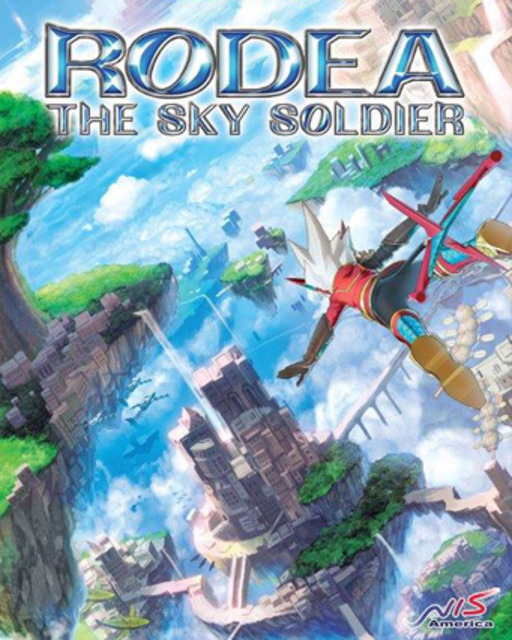
 Wii
Wii Nintendo 3DS
Nintendo 3DS Nintendo 3DS eShop
Nintendo 3DS eShop Wii U
Wii U